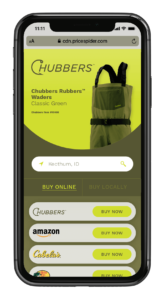There’s always the hot button debate with brands in what we like to joke is the ever evolving debate of D2C vs. Retail. And since we so fancy and remember our Shakespeare we say, “To D2C or not to D2C… IS THAT the Question?” In the evolving ecommerce landscape, there’s one thing for certain…change. And it’s not a “left or right,” “true or false,” “to be or not to be” question, it’s an omni-question scenario and they’re all important so let’s breakdown the prose here and get into it. What do brands do with their direct to consumer sales and does a where to buy solution fit in this scenario? The short answer is yes and…
When we talk to brands about where to buy solutions, we often hear, “What about my direct-to-consumer (D2C) sales? Won’t linking to retailers hurt my D2C business?”
The answer is “Yes.” But with a huge caveat. You’re essentially trading decreased D2C sales for increased overall sales.
You can absolutely still sell D2C when using a where to buy solution, and there are some things you can do to keep D2C sales at the forefront, but first, we need to address an important misconception brands often have about the retailers who carry their products.
Your retailers are partners, not competitors
Most of the time, when brands talk about retailers as competitors, they’re really talking about competing for sales of the same product.
Retailers who sell your products aren’t competitors. They’re your partners. They care about your brand. They help grow your business. And driving sales to them increases your bottom line.
If you treat your retail partners like competitors, you’re never going to maximize sales. That’s because even if your margins are lower, linking to retailers increases conversion rates on your product pages and generates more sales.
Here’s how.
An omnichannel approach increases sales
What percentage of your sales comes from D2C? And from retailers?
For most brands, the vast majority of transactions come from retailers, and D2C sales only represent a small percentage of overall sales.
Most of your customers buy your products through retailers. More importantly, the average consumer is already used to buying through Amazon, Walmart, Target, and other large retailers.
So when you insist that a new customer buys directly from you, there are more barriers standing between them and your product. You’re asking them to do something they’ve never done before (buy from you), instead of asking them to do something they do all the time (buy from their preferred retailer).
Account creation is a step they don’t have to take with their preferred retailer. All their credit card information and billing and shipping details are already saved.
If you don’t link to retailers and a consumer still wants to buy your product from one, you’re forcing them to search for you on Google or a retailer’s search engine. When this happens, you lose control of the path to purchase, and they may get poached by your competitors or simply give up.
Retailers also invest more in customer service, the shopping experience, their distribution channels, and the digital shelf. Buying through you means consumers don’t get to take advantage of retailer-specific perks like free two-day shipping, curbside pickup, buy-online-pick-up-in-store, membership cards, hassle-free returns, and rewards systems.
This is what makes the omnichannel approach to sales so valuable. With a where to buy solution, you let customers choose their ideal path to purchase, and you ensure they actually get there.
Still, linking to retailers doesn’t have to mean sacrificing D2C sales altogether. In fact, you can make sure that it’s the buying option your customers see first.
You can prioritize your own store
With Where to Buy, you get to decide which retailers your customers see, and what order they see them in. The more prominent the position, the more likely your customers are to click on that retailer. So if D2C sales are important to you, you can just put your own store in the first position.

Prioritizing your own store won’t drive everyone to buy from you. But it will ensure that your store is the first buying option everyone sees. Consumers who are open to buying directly from a brand can choose your store, and those who prefer a particular retailer can still easily get there.
See Where to Buy in action
Adding a Where to Buy button to your product pages doesn’t have to mean giving up your D2C sales. And it will mean better conversion rates. Because you’re letting your customers choose their preferred path to purchase, rather than shoehorning everyone into the same sales channel.
Schedule a demo today and see how Where to Buy can increase your bottom line.

